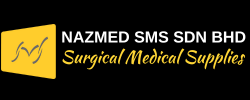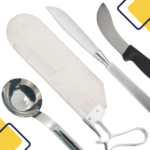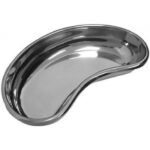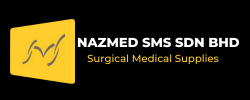In the realm of medical diagnostics, precision and accuracy are paramount. For healthcare professionals specializing in ear, nose, and throat (ENT) disorders, the use of a diagnostic ENT set is an indispensable tool in their everyday practice. In this comprehensive guide, we will delve into the fascinating world of diagnostic ENT sets from Nazmed SMS Sdn Bhd , their components, and their crucial role in diagnosing and treating a wide range of ENT conditions. So, let’s dive in and explore this essential medical tool!
#ENTDiagnosis #MedicalEquipment #EarNoseThroat
What is a Diagnostic ENT Set?
A diagnostic ENT set, short for Ear, Nose, and Throat diagnostic set, is a medical instrument designed specifically for healthcare professionals such as otolaryngologists (ENT specialists) and general practitioners. This set typically comprises various diagnostic tools, each tailored to assess different aspects of the ENT system. These tools allow medical practitioners to examine, diagnose, and treat a variety of ear, nose, and throat conditions.
Components of a Diagnostic ENT Set
A standard diagnostic ENT set usually contains several essential components, each serving a specific purpose in the diagnostic process. Let’s break down these components:
- Otoscope: The otoscope is a vital tool for examining the ear canal and eardrum. It consists of a light source and a magnifying lens, which enables the healthcare professional to visualize the ear’s internal structures, including the eardrum and ear canal. This helps in diagnosing conditions like ear infections, earwax blockages, and abnormalities.
- Ophthalmoscope: While not exclusive to ENT examinations, the ophthalmoscope is often included in diagnostic ENT sets. It allows for a detailed examination of the inner structures of the nose and throat. ENT specialists may use it to assess the throat, vocal cords, and nasal passages, looking for issues like inflammation, growths, or abnormalities.
- Speculum: Specula come in various sizes and are essential for opening up the nasal passages or the ear canal, providing better access for examination. They are particularly useful when combined with an otoscope or ophthalmoscope.
- Tongue Depressors: Tongue depressors are used for examining the throat and tonsils. They are also essential for assessing the health of the vocal cords and pharynx.
- Thermometer: Some diagnostic ENT sets may include a thermometer, allowing healthcare professionals to monitor body temperature, especially when fever is associated with an ENT condition.
- Light Source: Adequate lighting is crucial for a thorough examination. Diagnostic ENT sets often include a powerful light source for illuminating the area of interest.
- Flexible Fiber Optic Scope: Advanced ENT sets may include a flexible fiber optic scope. This tool provides a detailed view of the upper airways and can be inserted through the nose or mouth, aiding in the diagnosis of more complex ENT conditions.

How is a Diagnostic ENT Set Used?
Now that we have a clear understanding of the components, let’s explore how a diagnostic ENT set is used in a clinical setting:
- Patient Examination: When a patient presents with ear, nose, or throat symptoms, the healthcare professional begins by conducting a thorough physical examination. This involves using the otoscope, ophthalmoscope, and other tools to inspect the relevant areas. The speculum and tongue depressor may be used to gain better access and visibility.
- Visual Assessment: The visual assessment provided by the diagnostic ENT set helps the healthcare provider identify any abnormalities, such as inflammation, lesions, or foreign objects. This is crucial for diagnosing conditions like ear infections, tonsillitis, or sinusitis.
- Temperature Measurement: In cases where fever is present, the included thermometer can be used to monitor the patient’s body temperature, aiding in the diagnostic process and treatment decisions.
- Documentation and Diagnosis: The findings from the examination are documented in the patient’s medical record. Based on the assessment, the healthcare provider can make an accurate diagnosis and formulate an appropriate treatment plan.
- Treatment and Intervention: In many cases, minor procedures or treatments can be performed using tools from the diagnostic ENT set. For example, the removal of earwax blockages or the examination of vocal cord function.
- Referral and Further Testing: Depending on the diagnosis, the patient may be referred for additional tests or to a specialist for more advanced evaluation and treatment.
Conclusion
A diagnostic ENT set from SMS Instruments is an invaluable asset in the field of ear, nose, and throat medicine. It empowers healthcare professionals to conduct thorough examinations, make accurate diagnoses, and provide timely treatments for a wide range of ENT conditions. With its array of specialized tools, this diagnostic set plays a vital role in ensuring the health and well-being of patients with ENT concerns.
So, the next time you visit your ENT specialist, take a moment to appreciate the expertise and precision with which they use their diagnostic ENT set to provide you with the best possible care. It’s a testament to the remarkable advances in medical technology and the dedication of healthcare professionals in the field.







1 Comment
Elevating Surgical Excellence with Gallipot Stainless Steel from Nazmed SMS Sdn Bhd - Surgical Medical Supplies
[…] SMS Sdn Bhd has established itself as a prominent player in the medical instrument industry, and the SMS Instrument Gallipot is a shining example of the company’s commitment to quality […]